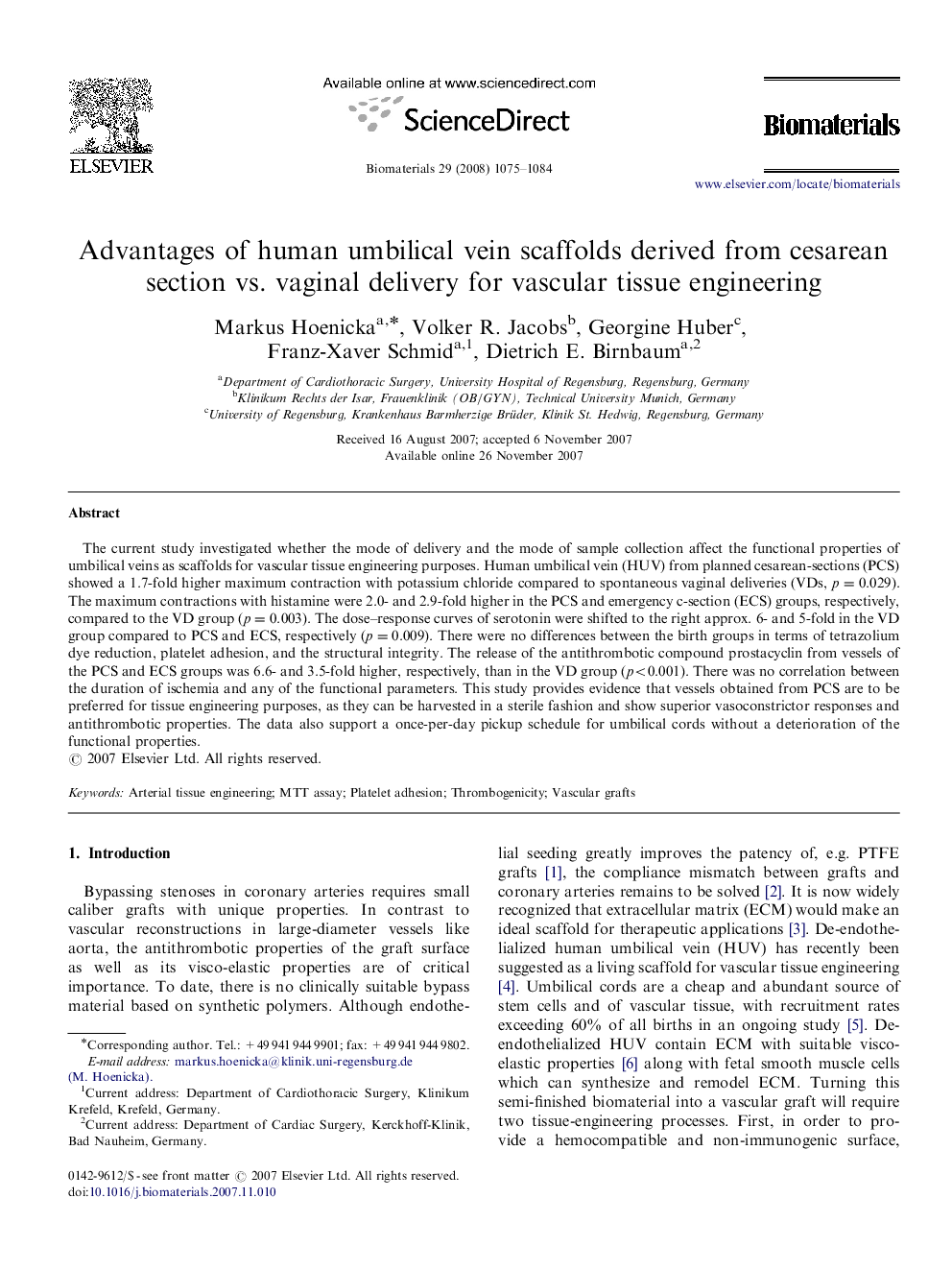| Article ID | Journal | Published Year | Pages | File Type |
|---|---|---|---|---|
| 11258 | Biomaterials | 2008 | 10 Pages |
The current study investigated whether the mode of delivery and the mode of sample collection affect the functional properties of umbilical veins as scaffolds for vascular tissue engineering purposes. Human umbilical vein (HUV) from planned cesarean-sections (PCS) showed a 1.7-fold higher maximum contraction with potassium chloride compared to spontaneous vaginal deliveries (VDs, p=0.029). The maximum contractions with histamine were 2.0- and 2.9-fold higher in the PCS and emergency c-section (ECS) groups, respectively, compared to the VD group (p=0.003). The dose–response curves of serotonin were shifted to the right approx. 6- and 5-fold in the VD group compared to PCS and ECS, respectively (p=0.009). There were no differences between the birth groups in terms of tetrazolium dye reduction, platelet adhesion, and the structural integrity. The release of the antithrombotic compound prostacyclin from vessels of the PCS and ECS groups was 6.6- and 3.5-fold higher, respectively, than in the VD group (p<0.001). There was no correlation between the duration of ischemia and any of the functional parameters. This study provides evidence that vessels obtained from PCS are to be preferred for tissue engineering purposes, as they can be harvested in a sterile fashion and show superior vasoconstrictor responses and antithrombotic properties. The data also support a once-per-day pickup schedule for umbilical cords without a deterioration of the functional properties.
